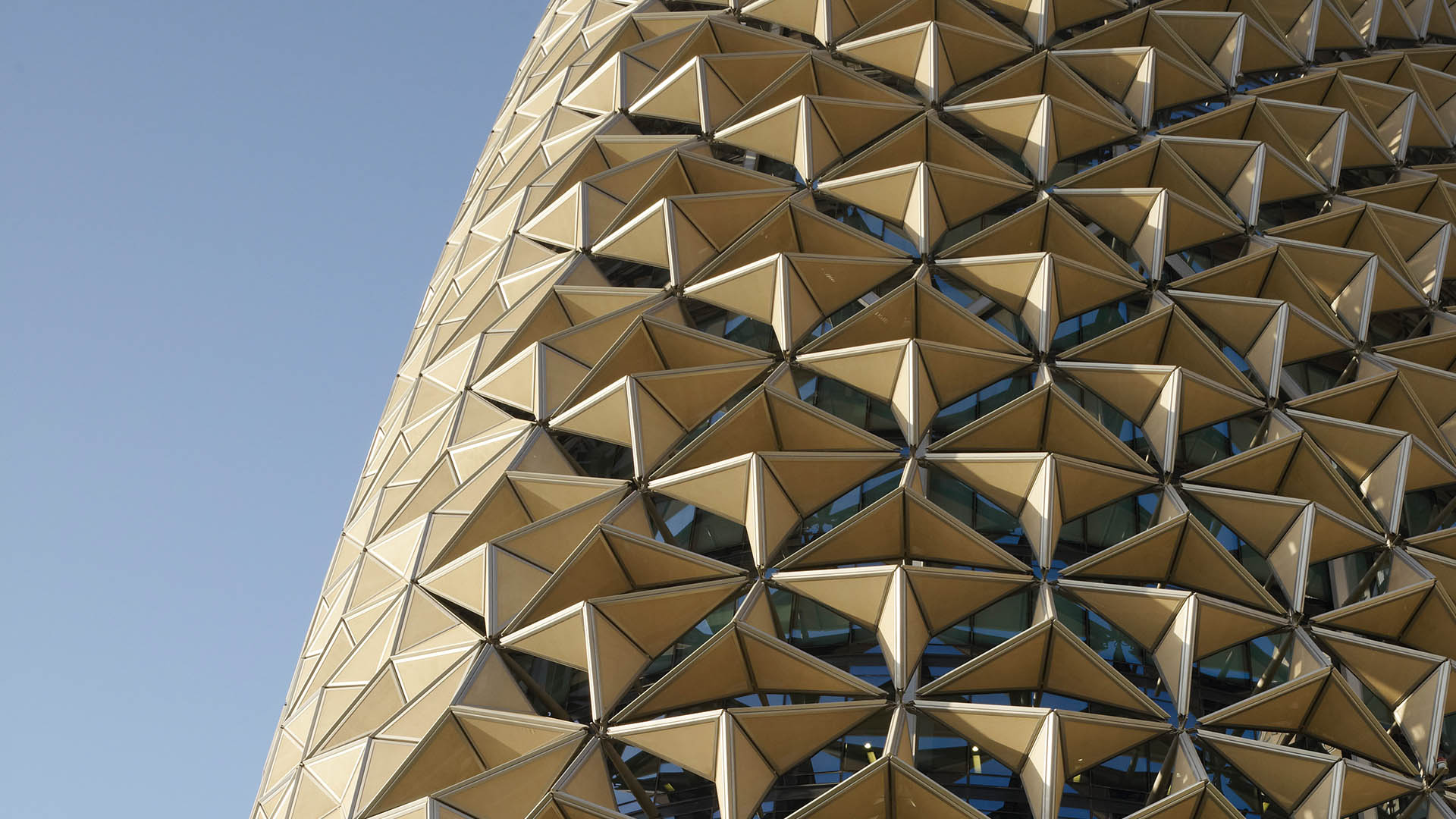Words By Tersoo Theophilus
If you’ve ever lived in a building; I’m pretty sure you must have experienced damp and heat gain or loss in some buildings. When rain starts falling; homes in Nigeria suffer from damp. There’s also the attendant problem of heat during the months of march and April in the north and cold during the long, dry harmattan season. When the dust blows in from the Sahara Desert; air quality reduces and all I think of; is how to solve these problems. Discomfort coupled with my curios instincts led me on a journey; to uncover the materials and systems that could be used to solve these problems. Guess what I found; “Building Skins or facades”.
A façade is a covering or the external part of a wall that’s exposed to the environment. A building’s facade serves as a protective layer to a building’s interior. It functions are similar to that of an animal’s skin. A building skin is designed to mirror other protective layers found in nature such as membranes, skins, cuticles and shells. It breaths, weeps and regulates the internal climate of the building. They’re practical and aesthetic reasons for using a building façade. A façade can be a tool for cultural expression or a fashion statement. A simple cursory glance at a building skin, can reveal a building’s function; from the sleek curtain walls of a corporate headquarters to the Stoney and imposing facade of a federal courthouse.
Facades can be traditional static facades or modern adaptive facades. Standard static façades; unfortunately require constant human attention to regulate the microclimate of buildings. Often, even human effort may be insufficient; for example, opening windows to reduce temperature is pointless when the outside temperature is higher than the desired room temperature. We can take cues from nature on how to design building skins that’re suitable for our tropical weather.
Bio-mimicry and Façade design
Imagine a facade that can respond appropriately to changes in the external environment without human effort; but one that is fully automated or mechanical. These are “adaptive façades”. The term “bio-adaptive façade” covers the façade systems capable of changing its function, shape, and behavior in response to fluctuating external conditions. They are designed to sense and react to any change in the environment; by mimicking the actions of organisms under same conditions. Organisms use excellent, smart and optimized systems to survive in harsh conditions. A critical look at these systems can offer us insight on how to design façade systems and their component materials. Materials like Corian, fiber glass and ceramics have been used to design facades that respond to changes in the environment appropriately. Ceramic products will be more economical and easy to obtain in Nigeria, because of the relative availability of ceramic in our clime.

In buildings, adaptive façade systems (also called responsive or dynamic facades), as seen above in the Al Bahar towers can guarantee controllable insulation, radiant heat exchange, daylighting, solar shading, humidity control, ventilation, and energy harvesting. Façade adaptivity (self-regulation of a certain façade’s properties) can be manifested in several ways. It could be through the; physical change of the façade shape (called kinetic façades). By the active control of the energy flow; e.g., by opening and closing windows, retracting sun shades.
Completed in June 2012, by Aedas Architects. This 145 meters’ tall tower, features a computerized dynamic façade; whose design inspiration was gotten from bio mimicry. Taking geometrical inspiration from the “mashrabiya”, a cultural lattice shading device. This façade is actuated by the sun’s movement in the sky. The facade closes in night and opens as the sun rises in the morning. This open and close movement of the dynamic façade can be compared to nastic movement of plants in nature. The al bahar towers hold lessons for other small scale buildings. The team at Aedas proved that indeed we can design and use building skins efficiently. Join me on this train of thought to uncover the benefits of using adaptive facades in buildings.
Thermal performance
Responsive facades can control heat loss or heat gain in buildings. They act as a barrier to direct solar radiation incident on the building’s surface. They protect the building from ultra Violet radiation (UV radiation), and also provide thermal defense. Materials with a low degree of permeability and highly reflective are most suitable for these type of facades.
Energy efficiency
“With great power comes great bills”. Buildings account for over 60% of global electricity demand. The story is no different in tropical areas with hot humid climates. Buildings found in these latitudes utilize artificial ventilation systems such as air conditioning to ensure human comfort in buildings. These systems consume a great deal of energy.
A Building with a well-designed façade can solve this problem by, reducing the amount of radiant solar energy absorbed by walls enveloping the building. Adaptive facades can also be modelled after natural cooling systems like those found in animal skins. Evaporative cooling in mammals can act as an inspiration for material or façade design innovation.
Daylighting
“We move through negative spaces and dwell in positive spaces”. Nobody loves dark spaces; I don’t think you do either.
A space that is permeated with natural light creates an ecstatic feeling; one that has therapeutic effects on its occupants. Humans gravitate towards light naturally. Facades enable buildings achieve this; by allowing just the right amount of light into the building by eliminating the need for heavily tinted glass; thereby increasing visibility and reducing the need for artificial lighting systems. Not only would this improve the physical wellbeing of occupants, it will reduce the building’s energy cost and ensure energy optimization.

Adaptive facades, can be the game changer in building construction sector in our climes. Their introduction into the local building construction landscape, will usher in a new vista; a different view of buildings; as a prosaic exterior to one that is alive and in constant motion. A change spurred by performance driven and technologically advanced façade designs for buildings.
Sometimes we tend to look at building design from an economical perspective; focusing more on the cost of designing and erecting a building or structure. By doing this we neglect other primal aspects of design and construction such as safety, comfort, energy conservation amongst others. This view is flawed. As Professionals, clients, developers and potential home owners; we need to be more eclectic about design. We need buildings that can perform optimally and above all ensure human comfort. Our guiding design philosophy should be a performance driven design.
Of course the road to adopting these systems will be bumpy; especially given our current realities in Nigeria. I mean how can a small article like mine; change our society’s addiction to traditional ways of building design and construction; but hey! Who knows? We might have a shot at adopting these systems in our buildings. I believe it’s worth the try…like the editors at the republic journal always say; “don’t just read; do something”. So there you have it; I have done my part…now it’s yours.
Want to get your article published? Get Started Here






